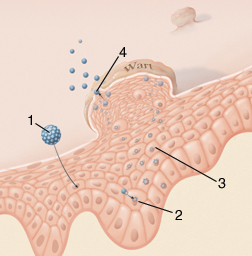Understanding Human Papillomavirus (HPV)
Understanding Human Papillomavirus (HPV)
Human papillomavirus (HPV) is a virus that causes warts. It can be hard to detect, so many people never even know they have it. Some strains (types) of HPV may cause warts on the hands, legs, or other parts of the body. These can spread from person to person. Other strains of HPV cause warts in the genital area. Of these, a few strains can lead to cancer in the area where the uterus and vagina meet (the cervix) and the genitals, as well as some other places. Treating genital forms of HPV now can help prevent serious health problems in the future.
How was I infected?
HPV is passed from person to person through contact with infected skin. Everyone with HPV has a different experience. Some people notice genital warts (condyloma) within a few months of exposure. In other people, warts take years to appear or may never appear. This makes it almost impossible to know when or by whom you were infected.
How warts form
HPV lives inside skin and mucous membrane (including in the mouth and vagina). The virus can make skin cells reproduce more often than they should. These extra skin cells build up into warts.
HPV invades the skin.
DNA from the virus enters skin cells.
HPV causes infected skin cells to multiply and form warts.
The virus sheds, allowing it to be passed to others.
Updated:
April 23, 2017
Sources:
Epidemiology of human papillomavirus infections. UpToDate., Virology of human papillomavirus infections and the link to cancer. UpToDate.
Reviewed By:
Lentnek, Arnold, MD,Pierce-Smith, Daphne, RN, MSN, CCRC,Sather, Rita, RN
